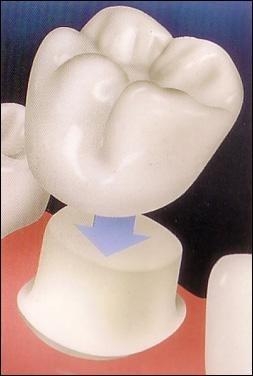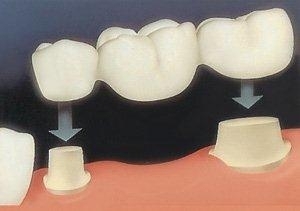General Procedures
Fillings
Fillings (resin composites) are done to remove decay, and replace the affected tooth structure. It is called a "filling" because a new material fills the hole that decay has left. In current times, most teeth are treated with bonded tooth-colored composite resin fillings. Caught early enough, cavities can be treated easily and painlessly. Left untreated, decay can lead to tooth pain and/or infection and the tooth would need root canal treatment or extraction.
Additional information on
fillings can be found at Webmd.com
Bonding
Bonding involves adhering composite resin material that is carefully matched to the color of the tooth, to the front of the tooth. This is done to repair damage done to the tooth by decay, to alter the alignment of the tooth, to close gaps between teeth, or for cosmetic purposes. The surface of the tooth is roughened in order to accept the bonding. A gel is applied to clean the tooth surface, and a primer/bond agent is applied so the material adheres to the surface. Then the material itself is placed on the tooth and hardened with an intense light. The composite resin material is shaped and polished to get a lustrous finish as a last step.
Additional
bonding information can be found at Webmd.com
Crowns

Crowns are full coverage restorations that are used to cover a tooth that is likely to break, or is too broken down to be restored with a filling. They are most commonly done after root canal treatment, or when a large filling wears out. The larger the cavity gets, the more likely a crown will be needed. Even after a filling is place in a large cavity, a tooth is more likely to break. Keep in mind that the jaw muscles are the strongest in the human body and teeth are subjected to tremendous pressures. Crowns cover a weakened tooth, providing strength and protecting the tooth against breakage. A broken or cracked tooth is a far more serious matter and much more difficult to treat. Crowns prevent this, as well as making for a nice smile.
It takes two appointments to restore a tooth with a crown. In the first any decay is removed from the tooth and it is shaped to accept the crown. Then an impression is made of the tooth for use in fabricating a crown. Between the two visits the crown is made. Usually of high-strength porcelain over gold alloy, all ceramic material, or gold. During this time a temporary crown is worn. In the second visit this temporary is removed. Then the permanent crown is adjusted as needed and then cemented in place.
Additional
Crown Information can be found at Webmd.com.
Bridges

This is an option for filling the space created by a missing tooth. It is formed to look like the missing tooth, and it takes its place in the mouth. The sides of a bridge use the two adjacent teeth for support, hence the name. A bridge replaces the missing tooth, both functionally and cosmetically. Materials used may be gold alloys, porcelain bonded to metal alloy or all ceramic materials. The choice of the materials depends on requirements for strength, wear, and/or esthetics.
It is important that a missing tooth be replaced as soon as possible for several reasons. Left untreated, the teeth surrounding the gap begin to shift inward, creating a chain reaction of bad things. Teeth use their neighbors for support and with one missing they start to "fall". Opposing teeth begin to erupt or drop to fill in the spaces. As the teeth continue to shift, the bite changes in response. This can eventually result in problems with the entire jaw, e.g. TMJ. The surrounding teeth deteriorate and it is just a matter of time before they, too, are lost.
Dentures/Partials
There are different types of dentures and partials, but they share a common function. They replace teeth that have become loose or have been lost due to any number of reasons, including bone loss. When bone loss around the roots of teeth is great enough to loosen them or allow them to fall out, it could be time for dentures. Relax. No one enjoys losing their natural teeth, but you can still eat and talk regularly.
The entire mouth is examined and a determination is made as to which teeth will have to be removed, and which will remain. After the recommended extractions are done, a denture or partial is fitted to replace any missing teeth in the mouth. There is an adjustment period after anything removable is placed in the mouth, and it can take some getting used to. Once accustomed to the dentures, all normal functionality and appearance return and one may carry on as usual. Often implants can be used to further stabilize dentures.
Additional
Denture information can be found at Webmd.com.
X-Rays
This is a focused beam of X-Ray particles through bone which produces an image on special film, showing the structure through which it passed. This gives the familiar black and white images that doctors and dentists use to diagnose problems. X-rays are a necessary part of the diagnostic process, not using them could lead to undiagnosed disease. Without an X-ray of the whole tooth, and supporting bone and gum tissues, there is no real way to detect infection or pathology that requires attention.
In our office we use digital radiography which allows us to take X-rays using 50-70% less radiation versus conventional X-rays. Coupled with computer monitoring, digital x-ray technology allows us to enhance the images for better diagnosis of any dental concerns.
Additional
Xray information can be found at Webmd.com.